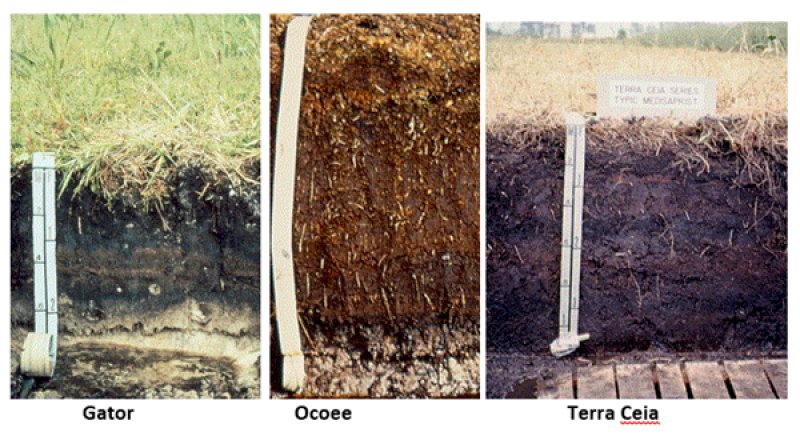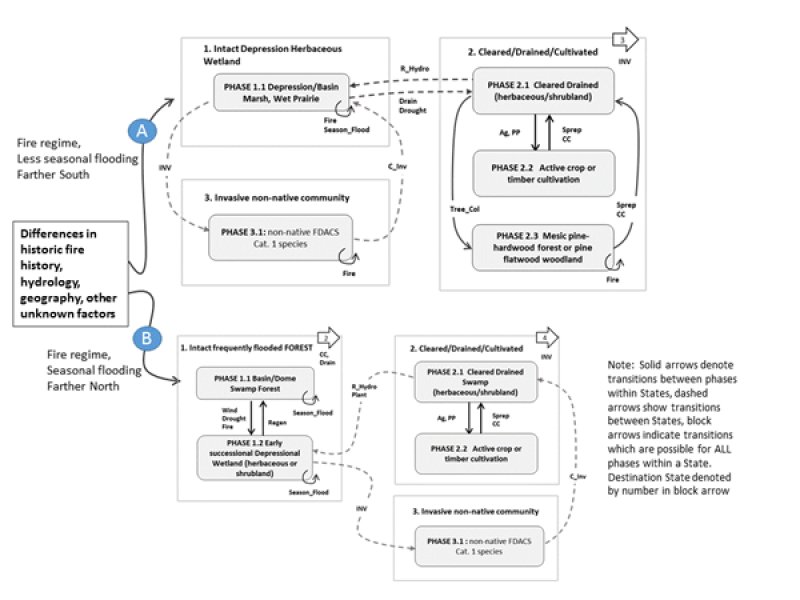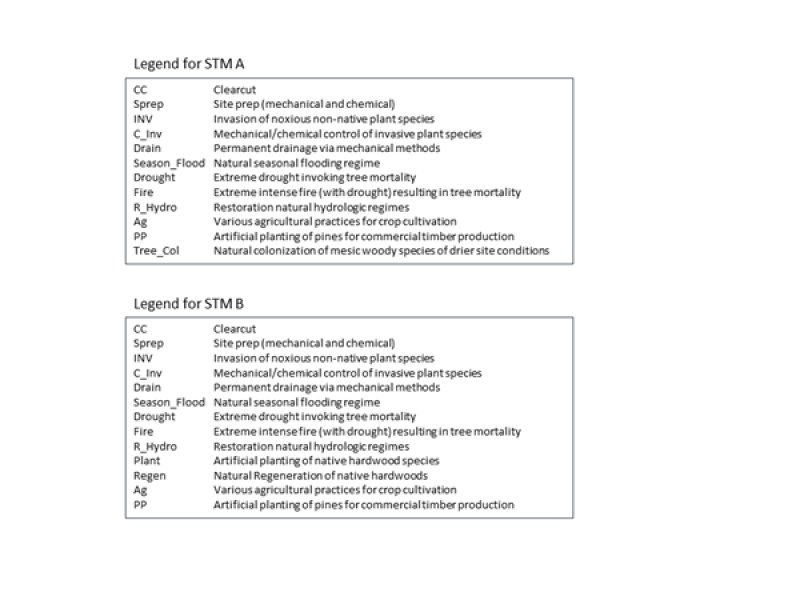
Natural Resources
Conservation Service
Ecological site F154XA014FL
Histic Wetland Depressions
Last updated: 5/13/2025
Accessed: 12/22/2025
General information
Provisional. A provisional ecological site description has undergone quality control and quality assurance review. It contains a working state and transition model and enough information to identify the ecological site.
MLRA notes
Major Land Resource Area (MLRA): 154X–South-Central Florida Ridge
This MLRA makes up about 7,209 square miles (18,672 square kilometers) and is entirely in Florida. MLRA 154 contains a series of parallel, prominent sandy ridges of Pleistocene marine origin, including the Brooksville and Mount Dora Ridges. These north to south oriented parallel ridges are interspersed with more low lying physiographic provinces, including: upland hills, plains, valleys and gaps (Puri and Vernon 1964).
Many of the soils in this sub-unit are Pleistocene or Holocene sands that are underlain with older, loamy Pliocene marine sediments (Cypresshead formation) or the clayey Miocene marine sediments (Hawthorne formation). A combination of marine depositional events and the dissolution of underlying limestone (karst geology) is responsible for surficial topography throughout Peninsular Florida.
Classification relationships
All portions of the geographical range of this site falls under the following ecological / land classifications including:
-Environmental Protection Agency’s Level 3 and 4 Ecoregions of Florida: 75 Southern Coastal Plain; 75c Central Florida Ridges and Uplands (Griffith, G. E., Omernik, J. M., & Pierson, S. M., 2013)
-Florida Natural Area Inventory, 2010 Edition: Depression Swamp, Depression Marsh, Basin Swamp (FNAI, 2010)
Ecological site concept
The central concept of the Histic Wetland Depressions is very deep, very poorly drained soils frequently ponded that forms in organic material that may be underlain with a mineral substratum. These soils are in closed depressions or along the fringes of water bodies, on slopes less than 1%. This site includes map units of the Brighton, Dorovan, Everglades, Gator, Hontoon, Lauderhill, Ledwith, Ocoee, Okeechobee, Okeelanta, Oklawaha, Pamlico, Samsula, Terra Ceia, and Tomoka series. This site is mapped in landform depressions of the Gulf Coastal Lowlands, Central Valley, St. Johns River Offset, Tsala Apopka Plain, and Western Valley physiographic units. The overall extent is approximately 94,000 acres.
Associated sites
| F154XA015FL |
Mineral Depressional Wetlands These are very poorly drained depressional concepts that will occur in mineral soils rather than organic soils, and will differ in physiographic positions, affect the types of vegetation and management strategies |
|---|---|
| F154XA016FL |
Wet Mineral Alluvial Forest And Marshlands These sites are very poorly drained alluvial concepts that will occur on mineral soils rather than organic soils, resulting in different types and amounts of vegetation as well as management strategies |
| R154XX017FL |
Wet Saline Marshes And Swamps These are very poorly drained tidal soils that will exist in intertidal landscape positions |
| F154XA013FL |
Histic Alluvial Forests These are very poorly drained depressional concepts that will occur in organic soils, and will differ in physiographic positions, affect the types of vegetation and management strategies |
Similar sites
| F154XA013FL |
Histic Alluvial Forests These are very poorly drained floodplain concepts that will occur in organic soils, and will differ in physiographic positions, affect the types of vegetation and management strategies |
|---|---|
| F154XA016FL |
Wet Mineral Alluvial Forest And Marshlands These sites are very poorly drained alluvial concepts that will occur on mineral soils rather than organic soils, resulting in different types and amounts of vegetation as well as management strategies |
| F154XA015FL |
Mineral Depressional Wetlands These are very poorly drained depressional concepts that will occur in mineral soils rather than organic soils, and will differ in physiographic positions, affect the types of vegetation and management strategies |
Table 1. Dominant plant species
| Tree |
(1) Taxodium ascendens |
|---|---|
| Shrub |
(1) Ilex cassine |
| Herbaceous |
(1) Woodwardia virginica |
Click on box and path labels to scroll to the respective text.


